LIGHTSHIP 116 "CHESAPEAKE"
Baltimore, Maryland

When Lightship 116 “Chesapeake” was completed in 1930,
she was among the most modern ships in use with the US Lighthouse Service.
Part of the vessel class of Lightship No. 100, Lightship 116 was
constructed from a standard design and boasted the best in stability,
signaling capacity, living accommodations, and engineering efficiency then
available.
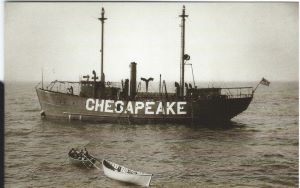 |
| Purchase copies of this postcard here. |
Lightship 116 was designed for a crew of up to 16 –
though normally several were away on shore leave at any given time.
Crew accommodations included two-man staterooms for the enlisted men,
a crew’s mess, and an electrically powered galley and refrigerator unit (a
major advancement for 1930).
Officers (1st and 2nd Officer, Engineer and Assistant
Engineer) had their own staterooms adjacent to their mess (dining room), and
the Captain, or Master as he was called in the Lighthouse Service, occupied
his own stateroom immediately behind the pilothouse.
The US Lighthouse Service first assigned Lightship 116
to the Fenwick Island Shoal (DE) Station from 1930-33; thereafter she marked
the entrance to Chesapeake Bay until the beginning of World War II.
During the war, most coastal lightships were withdrawn for security
reasons and were often converted for wartime duties.
From 1942-45, Lightship 116 was painted battleship gray, armed with
two, 20mm cannons, and used as a patrol/inspection vessel near the entrance
to the Cape Cod Canal.
In 1945,
Lightship 116 was returned to the waters off Cape Henry (VA) where her
bright red hull, beacon light and “Chesapeake” station designation guided
maritime traffic in and out of the Chesapeake Bay for the next 20 years.
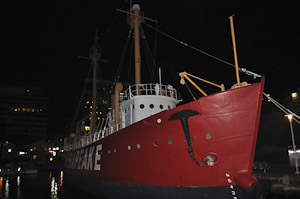 On two occasions (1936 and 1962) while marking the
entrance to the Chesapeake Bay, Lightship 116 rode out hurricanes so
powerful that the ship’s anchor chain broke, forcing the crew to drop the
spare anchor and fun full ahead into the wind for many hours in vain
attempts to remain on station.
On two occasions (1936 and 1962) while marking the
entrance to the Chesapeake Bay, Lightship 116 rode out hurricanes so
powerful that the ship’s anchor chain broke, forcing the crew to drop the
spare anchor and fun full ahead into the wind for many hours in vain
attempts to remain on station.
Despite some equipment upgrades, such as radar,
technology began to overtake Lightship 116 by the 1960’s.
In 1965, the Chesapeake Lightship Station was replaced by a Coast
Guard offshore light tower built on stout pilings strong enough to withstand
the roughest seas.
Manned by a
crew of just four, the light tower was cheaper to run and had a more
powerful beacon visible for a distance of 17 miles.
After being relieved at the mouth of the Chesapeake Bay, Lightship
116 proceeded north to her final duty station where she marked the
approaches to the Delaware Bay until replaced there by a large, automated
light buoy in 1970.
Chesapeake
has been in Baltimore since 1982.
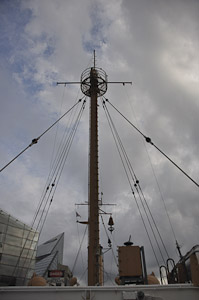
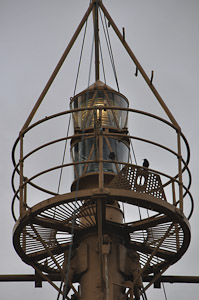
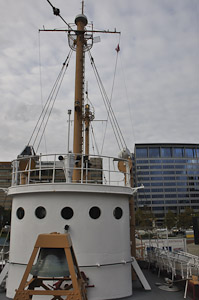
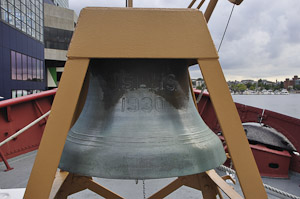
Return to the Maryland Lighthouses Page
Return to the: Alphabetical Listing or the Listing by States


